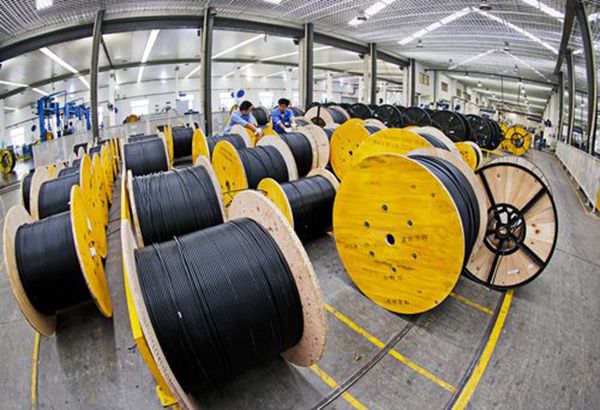Introduction:
In today's digital age, where data has become the lifeblood of our society, the need for faster and more reliable data transmission has never been greater. Optical fiber cables have emerged as a crucial technology that serves as a gateway to achieving these requirements. In this article, we will explore the advantages, advancements, and future prospects of optical fiber cables, highlighting their role in revolutionizing data transmission.
The Advantages of Optical Fiber Cables: a. High-speed Transmission: One of the primary advantages of optical fiber cables is their ability to transmit data at incredibly high speeds. Unlike traditional copper cables, fiber optic cables use light signals to carry information, allowing for data rates that can reach gigabits or even terabits per second. This high-speed transmission enables seamless streaming, quick downloads, and real-time communication.
b. Bandwidth Capacity: Optical fiber cables have a much greater bandwidth capacity compared to copper cables. They can support a larger volume of data transmission without experiencing signal degradation. This makes them ideal for applications that require heavy data traffic, such as video conferencing, cloud computing, and online gaming.
c. Longer Distances: Fiber optic cables can transmit data over much longer distances without experiencing significant loss of signal quality. This is due to the low attenuation property of optical fibers, which minimizes signal degradation. As a result, it is possible to establish long-haul communication links and connect remote locations with ease.

d. Immunity to Electromagnetic Interference: Unlike copper cables, optical fiber cables are immune to electromagnetic interference (EMI). This characteristic makes them highly reliable in environments where EMI is present, such as industrial settings and areas with high electrical activity. Fiber optic cables are also resistant to radio frequency interference (RFI), ensuring cleaner and more stable data transmission.
e. Enhanced Security: Fiber optic cables offer an added layer of security in data transmission. As light signals pass through the fiber, they do not emit detectable electromagnetic radiation that can be intercepted. This makes fiber optic communication more difficult to tap into, providing enhanced privacy and security for sensitive data.
Advancements in Optical Fiber Technology: a. Single-Mode vs. Multimode Fibers: Optical fiber cables come in two primary types: single-mode and multimode fibers. Single-mode fibers are designed for long-distance transmission, carrying a single light signal directly down the fiber core. Multimode fibers, on the other hand, have a larger core diameter and are used for shorter distances. Recent advancements have led to the development of advanced single-mode fibers with even lower loss and higher transmission capacity.
b. Dense Wavelength Division Multiplexing (DWDM): DWDM is a technology that enables multiple wavelengths of light to be simultaneously transmitted over a single optical fiber. This increases the data-carrying capacity exponentially, allowing for the transmission of multiple terabits of data per second. DWDM has revolutionized long-haul communication networks and is crucial for supporting the ever-increasing demand for high-bandwidth applications.
c. Fiber Optic Sensors: The use of optical fiber cables extends beyond data transmission. Fiber optic sensors have gained popularity in various industries, such as oil and gas, healthcare, and structural monitoring. These sensors utilize the properties of light to measure parameters like temperature, pressure, strain, and vibration. They offer high accuracy, immunity to electromagnetic interference, and the ability to cover large areas, making them invaluable in critical monitoring applications.
d. Quantum Communication: Quantum communication harnesses the unique properties of quantum mechanics to achieve secure and unhackable data transmission. Optical fiber cables play a vital role in quantum communication by enabling the transmission of quantum bits (qubits) over long distances. This technology has exciting prospects for secure data transfer, cryptography, and quantum computing.
The Future of Optical Fiber Cables: The future of optical fiber cables is promising, with ongoing research and development pushing the boundaries of data transmission capabilities. Here are some key areas to watch:
a. Higher Data Rates: Efforts are underway to develop technologies that can further increase data transmission rates over optical fiber cables. Advancements in modulation formats, coding schemes, and signal processing techniques aim to achieve multi-terabit-per-second data rates, supporting emerging applications like virtual reality, augmented reality, and 5G connectivity.
b. Flexible and Bend-Insensitive Fibers: Researchers are working on developing optical fibers that can withstand tighter bends without significant signal loss. This would enable easier installation, improved flexibility in cable routing, and the potential for integrating fiber optics into smaller devices and wearable technology.
c. Integration with Wireless Networks: The integration of optical fiber cables with wireless networks holds great potential for achieving seamless, high-capacity connectivity. By leveraging hybrid networks that combine fiber optics and wireless technologies like millimeter-wave and free-space optics, faster and more reliable wireless communication can be achieved in urban areas and remote regions alike.
d. Beyond Earth: Optical fiber cables have already revolutionized terrestrial communication, but their applications are not limited to Earth. In space exploration, fiber optic cables can provide high-speed data transmission between satellites, enabling efficient inter-satellite communication and faster transmission of scientific data back to Earth.
Conclusion:
Optical fiber cables serve as a gateway to faster, more reliable, and secure data transmission. Their numerous advantages, including high-speed transmission, greater bandwidth capacity, resistance to electromagnetic interference, and enhanced security, make them indispensable in today's digital world. Ongoing advancements in optical fiber technology, such as DWDM, fiber optic sensors, and quantum communication, continue to push the boundaries of data transmission capabilities. As we look to the future, optical fiber cables will play an increasingly vital role in supporting emerging technologies and satisfying the ever-growing demand for faster and more efficient data connectivity.



